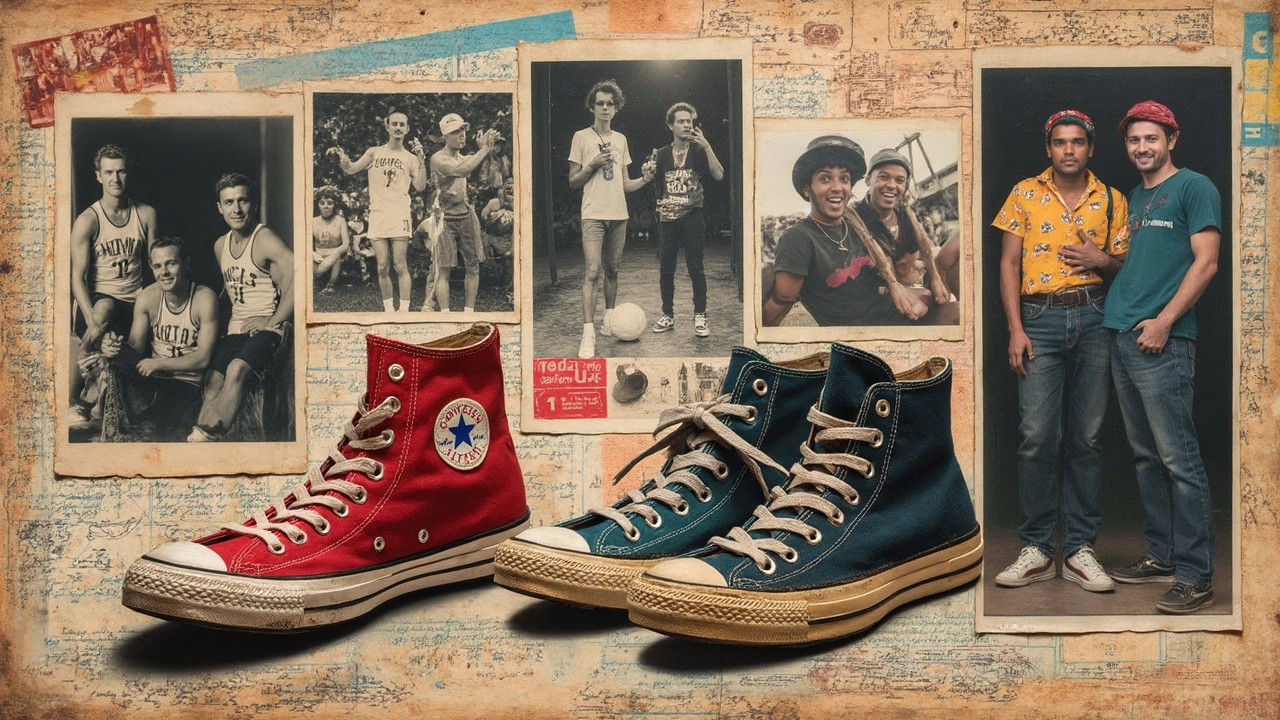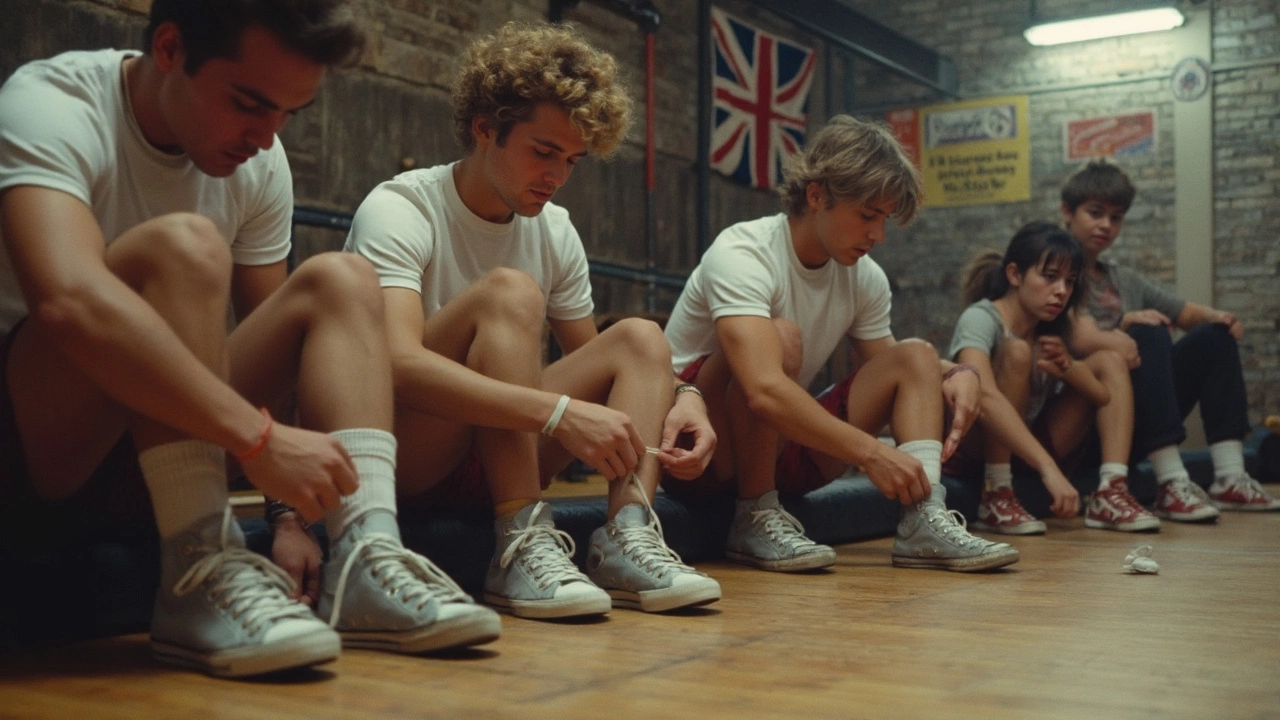You've definitely seen Converse everywhere—from skateparks to coffee shops to chaotic music festivals. But are they really trainers, or are they just cool sneakers riding on nostalgia?
Before tossing your Chucks into your gym bag, it's smart to know what actually makes a trainer a trainer. A lot of people use the word 'trainer' when talking about any athletic shoe, but brands and sneakerheads divide them up based on design, support, and purpose. If you’re wondering where Converse fit in, you’re not alone. They’re stylish, for sure, but are they built for your next workout or just comfy for a stroll?
- Defining Trainers: What Counts?
- The History of Converse: More Than Meets the Eye
- Converse vs Classic Trainers
- Can You Actually Work Out in Converse?
- Styling and Caring for Your Converse
Defining Trainers: What Counts?
So, what does the word trainer actually mean? It’s thrown around a lot, but in the shoe world, a trainer is more than just any old sneaker. Trainers are known as athletic shoes designed for specific sports or workouts. They usually offer features like extra support, stability for your feet and ankles, and cushioning that can handle running, jumping, or quick side-to-side moves.
If you look at big sports brands, their trainers lines target activities like running, cross-training, or even lifting weights. That’s why you see shock absorption materials, arch support, and grippy soles in popular models. Some even have mesh panels for breathability or reinforced toes for high-impact moves—think of classic Nike Air or Adidas Ultraboosts.
Here’s a quick look at what usually sets a trainer apart from regular shoes:
- Thicker, more supportive soles
- Cushioning for impact protection
- Structured heel and arch support
- Non-slip outsoles for good grip
- Material built for movement, like flexible mesh or leather
In the UK, the word "trainer" just means what Americans call a "sneaker"—any kind of sporty, comfy shoe. But purists look for those functional details listed above, not just style. If you pick up a pair and they feel flimsy or flat, they're probably not true trainers, no matter how trendy they look.
Is every Converse technically a trainer? The design says casual, but the final answer depends on these features and the kind of activity you want them for. Let’s get into how Converse stacks up compared to the classic idea of a trainer.
The History of Converse: More Than Meets the Eye
Here’s what surprises a lot of people: Converse shoes have actually been around for well over a century. The Converse Rubber Shoe Company started back in 1908 in Malden, Massachusetts, focusing first on rain boots and then jumping into the sports scene.
The iconic Converse All Star—which most people call “Chucks”—first dropped in 1917. They weren’t just for show; these were made as basketball shoes. Chuck Taylor, a semi-pro basketball player, joined the company in the early 1920s and helped tweak the design. His signature got slapped on the ankle patch, and that's how the shoe got the name “Chuck Taylor All Star.” From the 1930s into the 1970s, these kicks completely took over basketball courts. Nearly every player on the Olympic basketball teams from 1936 to 1968 wore Converse All Stars.
If you’re picturing sweaty gym classes and old high school yearbooks, you get the vibe. For decades, Chucks *were* the go-to sneakers for serious athletes. It wasn’t until the late ’70s that pro sports moved onto chunkier, more cushioned shoes, leaving Converse to take over the music scene, skate culture, and street style.
| Year | Milestone |
|---|---|
| 1908 | Converse Rubber Shoe Company founded |
| 1917 | First Converse All Star basketball shoe released |
| 1923 | Chuck Taylor signs on, shoe becomes "Chuck Taylor All Star" |
| 1936-1968 | Official shoe of the Olympic basketball teams |
| 1980s+ | Worn mostly for fashion, music, and lifestyle |
Today, Converse are everywhere—on runways, at punk rock gigs, and just hanging out on city streets. So while the history is rooted in sports, the way people use them now is all about personal style. The story of Converse proves they're more than just a basic footwear choice—they've shaped how we look at trainers and sneakers altogether.

Converse vs Classic Trainers
It’s easy to throw all sneakers into the same pile, but there’s a pretty clear split between Converse and what most people call "classic trainers." Let’s break it down.
Traditional trainers—like Nike Air Max, Adidas Ultraboost, or New Balance 327—are loaded with tech built right in. We’re talking about cushioned insoles, arch support, impact-absorbing soles, and sometimes even anti-microbial linings. These shoes are designed for movement: running, gym sessions, or long walks without destroying your feet.
Now think about Converse Chuck Taylor All Stars. Honestly, their vibe hasn’t changed much since they dropped back in 1917. Flat sole, canvas upper, not much arch support, and kind of basic cushioning. And yet, they still have a huge fanbase. That’s because they’re iconic, not because they’ll take you through a marathon in comfort.
| Feature | Converse | Classic Trainers |
|---|---|---|
| Sole Type | Flat rubber | Cushioned, contoured |
| Arch Support | Minimal | Generous |
| Primary Use | Casual, style, light activity | Running, training, sports |
| Upper Material | Canvas (or leather) | Synthetics, mesh, leather |
| Design Changes | Rare, mostly classic | Frequent, tech-driven |
That’s not to say Converse can’t hang during workouts. Loads of people wear them for lifting at the gym, especially if they want a flat surface for deadlifts. But if you need serious support for sports or you're on your feet all day, classic trainers are probably smarter.
Bottom line? Both have their place, but they’re not the same. Converse are about looks, attitude, and history, while classic trainers focus on performance and foot health.
Can You Actually Work Out in Converse?
Here's a question that pops up everywhere—can you seriously work out in Converse? The short answer: yes, but there’s a catch. Old-school Converse Chuck Taylors have been spotted on gym floors, during deadlifts, and even at NBA games back in the day. The flat, grippy sole is a big reason why some lifters actually prefer them over chunky running shoes.
But let’s break it down. What kinds of workouts work well with Converse?
- Weightlifting: The minimal cushion and flat base keep you stable during squats, deadlifts, and presses. Some powerlifters swear by Chucks for this reason.
- Bodyweight exercises: Push-ups, planks, and other moves don’t usually demand much support from your shoes, so Chucks work fine here.
- Short walks: If you’re just heading around town or doing quick errands, Converse won’t let you down.
Where do Converse fall short? If you’re running, jumping, or need a lot of side support, they’re not ideal. The thin canvas upper and basic sole don’t give much cushion or shock absorption. After a couple miles on the track or court, your feet will probably start to notice.
Check out this quick rundown on which popular workouts fit best with Converse:
| Workout Type | How Converse Perform |
|---|---|
| Weightlifting | Excellent stability and grip |
| HIIT/Cardio | Limited support, not ideal for jumping |
| Running | Poor cushioning, not recommended for anything long distance |
| Yoga/Pilates | Can work, but most prefer barefoot or grip socks |
| Everyday Wear | Comfortable for short strolls or errands |
If you love the look or just want a no-fuss shoe for the weight room, Converse have you covered. For anything high impact, though, real trainers bring more comfort and protect your feet better. Rule of thumb: Chucks are solid for lifts but not for laps.

Styling and Caring for Your Converse
If you're eyeing Converse as your go-to sneakers or trainers, it helps to know just how versatile they are when it comes to style. You can wear them with pretty much anything—classic jeans, shorts, dresses, or even some casual suits if you're feeling bold. The iconic Chuck Taylor logo, those recognisable white rubber toes, and the huge range of colors make it easy to match them to your mood or outfit.
To make your Converse pop, try swapping out the laces for a fresh color, or go high-top for a vintage vibe. If you want a grunge look, let them get a bit scuffed up. But if you love that “fresh out the box” feel, keeping them clean does take a little effort. Here’s how to keep your sneakers in great shape:
- Spot clean with a damp cloth and mild soap for small stains—don’t just toss them in the washing machine unless you want them to lose their shape fast.
- Stuff them with paper towels while drying. This keeps them from shrinking or getting weird creases.
- Avoid using bleach if they’re not pure white—it’ll cause discoloration.
- If the white rubber parts start to look dull, scrub them gently with a toothbrush and a bit of toothpaste. It actually works!
One funny thing: Converse Chuck Taylors have been around for over 100 years, and people have done everything from skateboarding to powerlifting in them. That means you’ll sometimes see a beat-up pair and a spotless pair right next to each other at the same event.
| Converse Care Basics | What to Avoid |
|---|---|
| Hand wash with mild soap | Machine washing |
| Dry at room temp, avoid direct sun | Heaters or tumble dryers |
| Replace insoles for comfort | Bleach (on colors) |
One last tip: if you want your shoes to last, rotate between a couple of pairs, especially if you’re using them for workouts. The canvas material can wear out quicker than leather trainers, but good care gets you way more life out of your favorite kicks. Show them a little love, and your Converse can stay your style staple for years.

